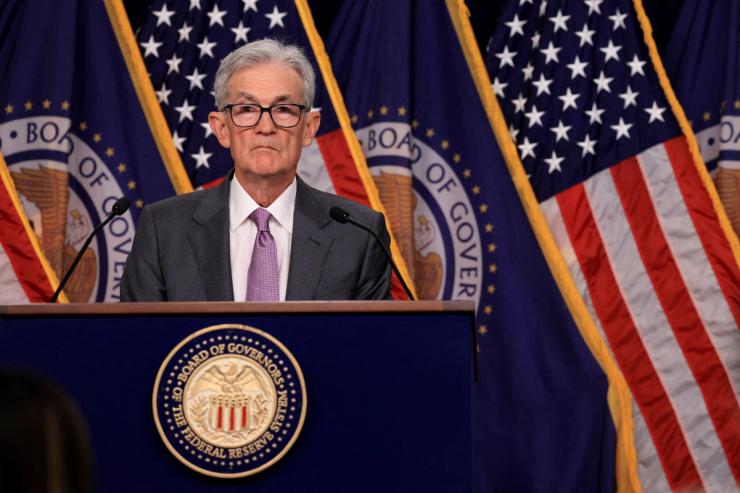The News
Investors and markets are anxiously awaiting US Federal Reserve Chair Jerome Powell’s speech at the annual Jackson Hole symposium in Wyoming on Friday, following a fresh spate of economic data that bolstered the case to cut rates come September.
Two new reports released over the last 10 days show that inflation cooled in July to 2.9%, the lowest level since 2021, and that the US labor market was significantly weaker than previously estimated. Both data points make it more probable the Fed will cut rates next month, and they give fuel to some economists saying the central bank has already waited too long to start.
Three-quarters of economists expect the Fed to reduce rates by a quarter of a percentage point when its rate-setting committee meets Sept. 17 and 18, while the rest anticipate a half-point cut, according to CME Group.
SIGNALS
Investors get the jitters on small cut expectations
After rising all week, major stock indices fell on Thursday ahead of the Fed chief’s speech Friday morning. The Dow Jones Industrial Average slumped 0.43%, the S&P 500 fell 0.89%, and the Nasdaq Composite lost 1.67%. Barron’s attributed the drop to weak manufacturing numbers released Thursday and pre-Jackson Hole jitters. “Many are expecting [Powell] to call for cuts BUT downplay how aggressive the Fed is going to be,” Mizuho’s Daniel O’Regan wrote in a research note. July’s surprising jobs report led some on Wall Street to expect a half-point cut in September, The Washington Post reported, but according to O’Regan, investors are beginning to think that’s off the table. CME Group’s FedWatch tool shows economists have increasingly shifted their expectations to a quarter-point cut in recent days.
Weaker jobs data won’t change quarter-point cut estimates, economist says
The Bureau of Labor Statistics on Wednesday lowered its estimate of the number of new jobs created over the 12 months that ended in March by 818,000 jobs — the largest downward revision since 2009. The shift indicates last year’s jobs market was not as hot as previously believed and adds to fears that the Fed has waited too long to cut rates, potentially tipping the US into a recession. LPL Financial chief economist Jeffrey Roach told CBS, “a deteriorating labor market will allow the Fed to highlight both sides of the dual mandate,” referring to the Fed’s goal to keep unemployment low and interest rates at around 2%. Nationwide economist Ben Ayers said he didn’t expect the jobs data to change the Fed’s actions, telling the outlet he foresees a conservative quarter-point cut, along with most economists.
Home sales pick up, but one rate cut won’t fix the housing crisis
After being stuck at low levels all year, sales of existing homes are finally rising again, albeit by only 1.3% in July, the National Association of Realtors reported on Thursday. The boost comes in part from falling mortgage rates, which opens the market up to more buyers. However, the costs to buy a home are still at a record high, with the median price rising to $422,600 last month, up 4.2% from the same time last year. Buyers and sellers may be holding off on finalizing sales until the Fed cuts rates, according to Realtor.com, which expects activity to pick up in the fall. But one rate cut is not enough to fix the US’ housing affordability crisis, one Moody’s economist said, adding that it would take additional cuts over many months to create a more balanced market.



